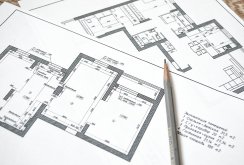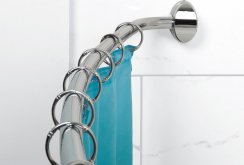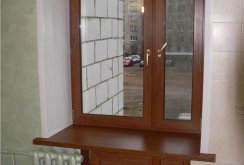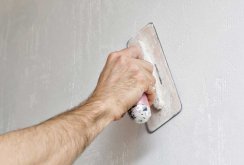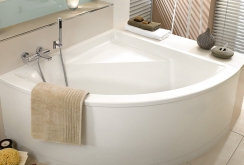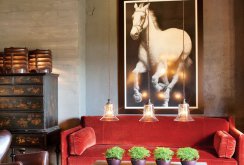Facade of the building: existing types of design
In terms of their location and functionality, the facade parts of the buildings are divided into:- The main or front facade is a part of the building with a central (front) entrance. As a rule, it is decorated richer than the others and serves as a visiting card of the owner of the house.
- End or side facades are narrow parts of an architectural structure that do not have distinctive features of the front design.
- Yard, street, park facade - this is the back of the building, facing the corresponding architectural or natural object.
The influence of architectural styles on the appearance of buildings
The first impression of a stranger is formed by his appearance: wardrobe items, hairdo, gait, speech. Buildings are also rated “by clothes”, a quick look at the facade of the house is enough to get an idea of the time of its construction, the inherent functionality and personality of the owner. Architecture developed and changed with the development of society, responding to each of its metamorphoses with the birth of a new style. There are many types of architectural styles, and it is very difficult for an uninitiated person to independently understand everything. At the same time, each has its own unique characteristics, knowing which, you can determine in what style the object is built. Architectural styles of facades popular in modern construction and their distinctive features:- Classicism - a clear layout, symmetry, rhythmic repetition of horizontal and vertical lines, massive and stable structures, elongated rectangular windows, moderate decor. Facades are often adorned with antique columns, bas-reliefs, statues and medallions.
- Baroque - bizarre curved lines combined with classics, massive, richly decorated structures, tent and dome arches, turrets, colonnades, luxurious stucco molding, floral ornaments and statues.
- Art Nouveau - frame forms, an abundance of metal and glass, shop-windows, mainly arched windows, rejection of the strict geometry of forms, plant motifs.
- Gothic - vertical lines tending upwards, lancet arches, a complex frame structure of a ribbed roof, the main building material is stone, carved details on the facades, the desire for lightness.
- High-tech - a minimum of decor and a maximum of functionality, straight lines and simple shapes, basic materials: glass, concrete, metal and plastic, practicality, emphasized technicality.
Facade decoration
The choice of materials for the decoration of facades is huge, everything you need can be selected from the detailed colorful catalogs without leaving your home. For this, it is necessary to study their technical parameters in detail and determine the installation method. Facade mounting methods:- Wet - involves the installation of facade elements using various liquid building mixtures, compositions, chemistry. It includes plastering, lining with artificial and natural stone, tiles.
- Dry - involves the construction of a frame around the main facade walls of the frame, followed by fastening to it the finishing material (with or without insulation): siding (various types), sandwich panels, porcelain stoneware, facade cassettes.
- Plaster is a traditional material for leveling and decorating walls. The composition of the main binder is distinguished: acrylic, silicone, silicate and mineral plaster mixes.
- Facing or facade brick is an environmentally friendly material with a high degree of decorativeness and strength. Ceramic and clinker are made of clay, silicate and hyper-pressed from cement.
- Natural stone is the best natural material for facade cladding in terms of strength characteristics. Of the minuses - high complexity and cost.
- Artificial stone - is made on the basis of natural and synthetic resins, gypsum, clay, concrete, sand-polymer mixture. It has the correct (facilitates laying) shape and high strength and decorative indicators.
- Facade tile - made of different materials: ceramics, porcelain stoneware, cement. It can imitate various textures, it is convenient for installation in a dry and wet way.
- Siding - used for decoration in low-rise construction, easy to install, moisture resistant. It is made of pvc, metal, wood, panels with a cement-cellulose mixture (fiber cement).
- Facade cassettes - metal panels with a polymer coating or panels made of composite materials. Used to create a durable stylish ventilated facade.

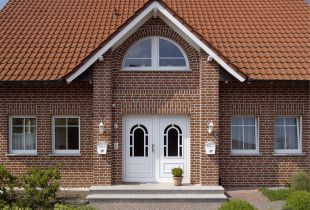 Clinker tiles for facade and interior (20 photos): characteristics and examples of decoration
Clinker tiles for facade and interior (20 photos): characteristics and examples of decoration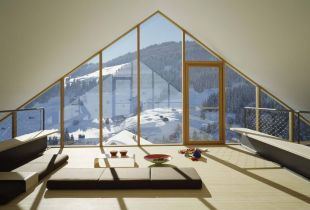 Glazing of house facades (50 photos): interesting and stylish solutions
Glazing of house facades (50 photos): interesting and stylish solutions Brick house cladding (75 photos): beautiful ideas and combinations
Brick house cladding (75 photos): beautiful ideas and combinations